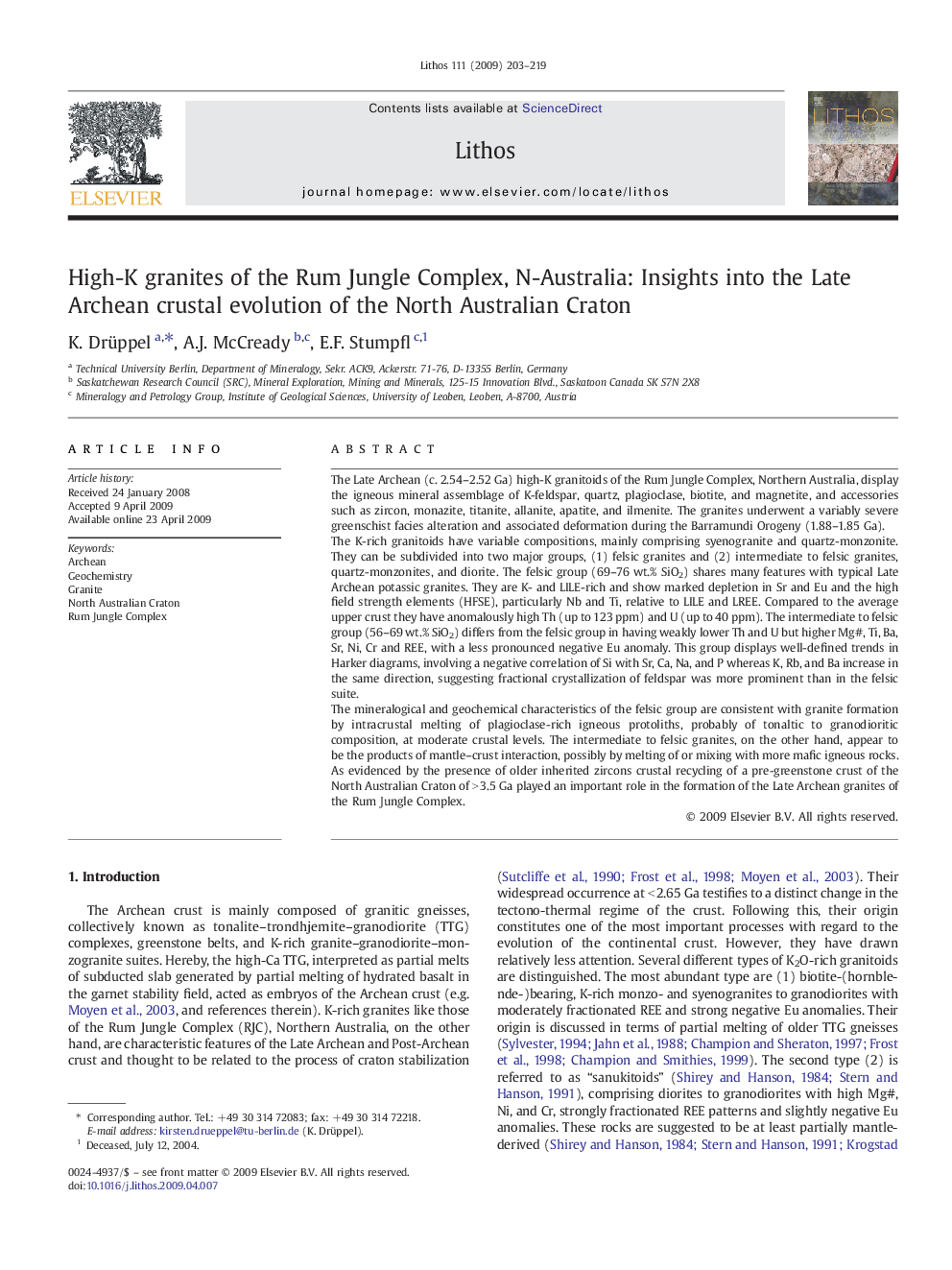| کد مقاله | کد نشریه | سال انتشار | مقاله انگلیسی | نسخه تمام متن |
|---|---|---|---|---|
| 4717358 | 1638742 | 2009 | 17 صفحه PDF | دانلود رایگان |

The Late Archean (c. 2.54–2.52 Ga) high-K granitoids of the Rum Jungle Complex, Northern Australia, display the igneous mineral assemblage of K-feldspar, quartz, plagioclase, biotite, and magnetite, and accessories such as zircon, monazite, titanite, allanite, apatite, and ilmenite. The granites underwent a variably severe greenschist facies alteration and associated deformation during the Barramundi Orogeny (1.88–1.85 Ga).The K-rich granitoids have variable compositions, mainly comprising syenogranite and quartz-monzonite. They can be subdivided into two major groups, (1) felsic granites and (2) intermediate to felsic granites, quartz-monzonites, and diorite. The felsic group (69–76 wt.% SiO2) shares many features with typical Late Archean potassic granites. They are K- and LILE-rich and show marked depletion in Sr and Eu and the high field strength elements (HFSE), particularly Nb and Ti, relative to LILE and LREE. Compared to the average upper crust they have anomalously high Th (up to 123 ppm) and U (up to 40 ppm). The intermediate to felsic group (56–69 wt.% SiO2) differs from the felsic group in having weakly lower Th and U but higher Mg#, Ti, Ba, Sr, Ni, Cr and REE, with a less pronounced negative Eu anomaly. This group displays well-defined trends in Harker diagrams, involving a negative correlation of Si with Sr, Ca, Na, and P whereas K, Rb, and Ba increase in the same direction, suggesting fractional crystallization of feldspar was more prominent than in the felsic suite.The mineralogical and geochemical characteristics of the felsic group are consistent with granite formation by intracrustal melting of plagioclase-rich igneous protoliths, probably of tonaltic to granodioritic composition, at moderate crustal levels. The intermediate to felsic granites, on the other hand, appear to be the products of mantle–crust interaction, possibly by melting of or mixing with more mafic igneous rocks. As evidenced by the presence of older inherited zircons crustal recycling of a pre-greenstone crust of the North Australian Craton of > 3.5 Ga played an important role in the formation of the Late Archean granites of the Rum Jungle Complex.
Journal: Lithos - Volume 111, Issues 3–4, August 2009, Pages 203–219